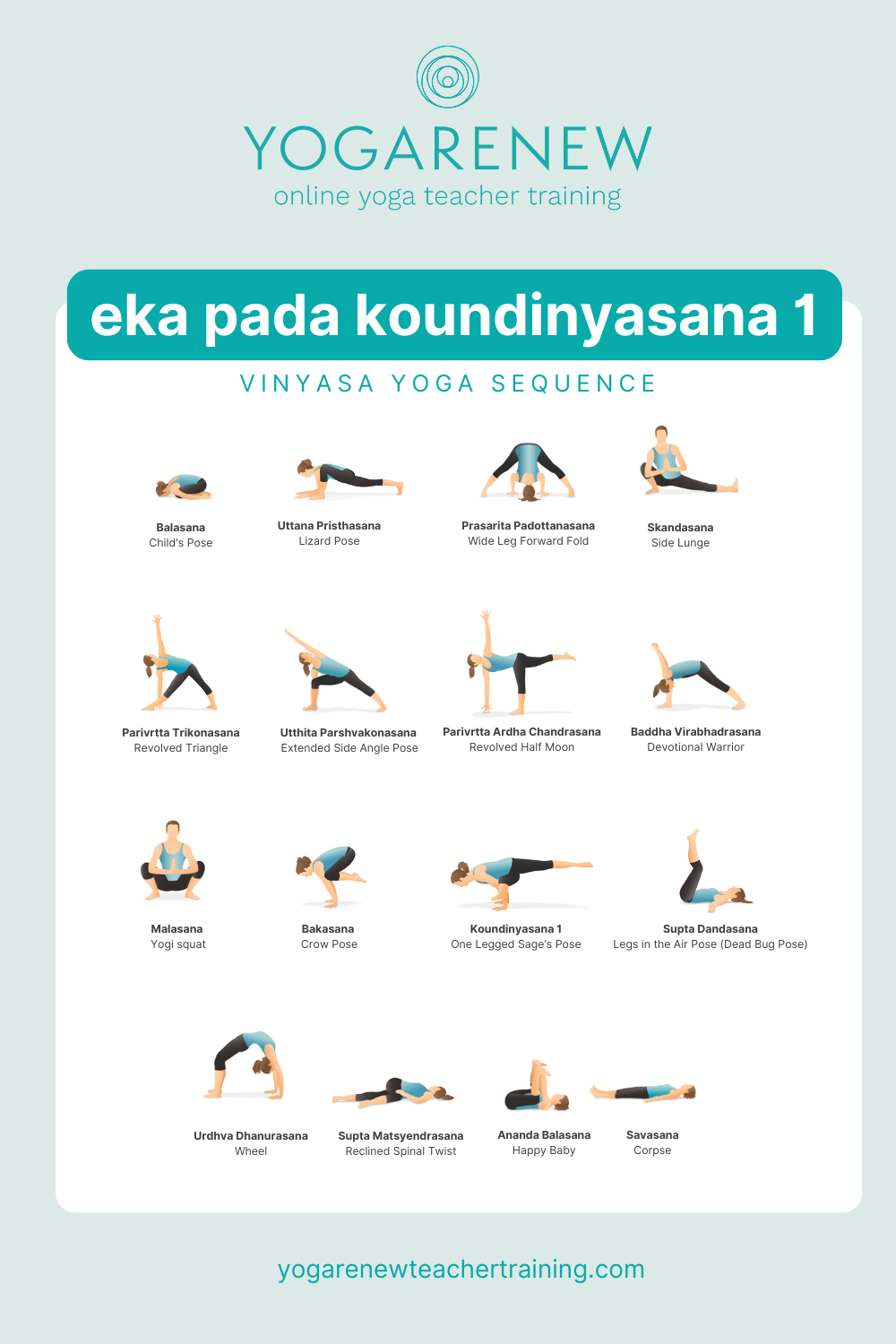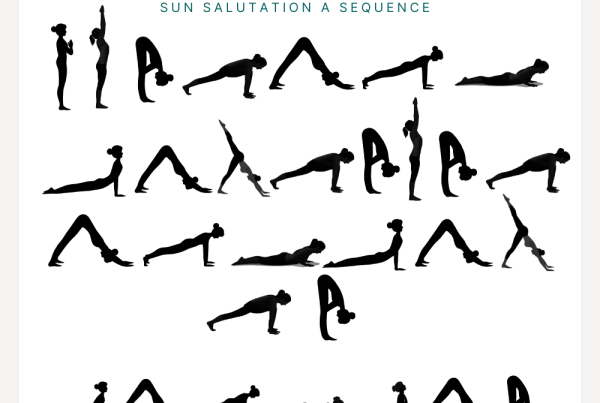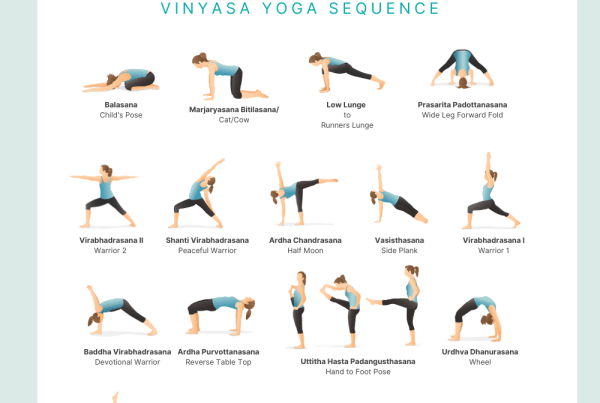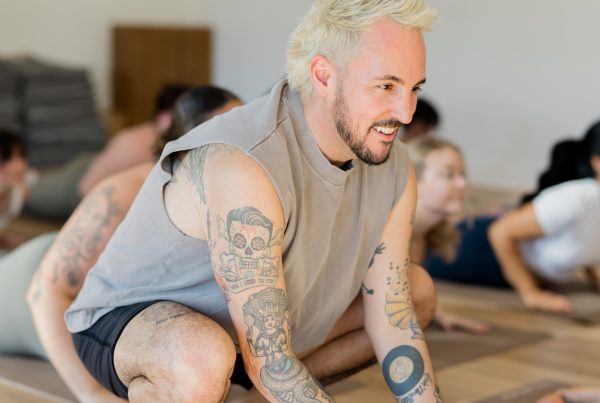
Eka Pada Koundinyasana I, or One-Legged Sage Pose, is a beautiful arm balance that weaves strength, flexibility, and focus into one empowering shape. This pose asks us to trust ourselves—to play at the edge of our balance and truly feel into the body.
But we don’t just leap into this peak pose. We prepare. We soften. We open the hips, twist the spine, engage the core, and connect breath to movement with mindfulness. In this vinyasa sequence, each posture serves as a stepping stone toward Koundinyasana I—guiding the body, breath, and mind into a state of readiness.
Puttering
We begin by turning inward, creating space in the body and mind.
- Balasana (Child’s Pose): Settle into the earth. Let the breath deepen, tuning in to sensation and the space within.
- Uttana Pristhasana (Lizard Pose): Opening the hips, we begin to explore the mobility needed for deeper lunges and arm balances.
- Prasarita Padottanasana (Wide-Leg Forward Fold): Stretching the hamstrings and inner thighs prepares the legs for movement and balance.
- Skandasana (Side Lunge): Moving side-to-side, we awaken the adductors and create dynamic hip opening.
Standing, Balance & Twists
Twists and standing poses begin to activate the obliques and build the foundation for Koundinyasana.
- Parivrtta Ardha Chandrasana (Revolved Half Moon): A balancing twist that ignites core stability while challenging focus.
- Baddha Virabhadrasana (Devotional Warrior): A moment of surrender within strength, stretching the shoulders and grounding the legs.
- Utthita Parshvakonasana (Extended Side Angle Pose): Integrating strength and length, this posture deepens the side-body stretch.
- Parivrtta Trikonasana (Revolved Triangle): One of the key twists in this flow. It challenges balance and flexibility—essential components for Koundinyasana.
From grounding and twisting, we transition into the preparation for flight.
- Malasana (Yogi Squat): We return to the earth, finding openness in the hips and a steady connection with the ground.
- Bakasana (Crow Pose): The gateway to arm balances. Here we find the lift, core engagement, and trust needed to fly.
Peak Pose: Eka Pada Koundinyasana 1
Eka Pada Koundinyasana I (One-Legged Sage Pose): Now, we bring it all together. A deep twist, strong arms, lifted hips, and one extended leg. It’s not about perfection—it’s about exploration and courage.
Wind Down
After the peak, we give the body time to unwind and integrate.
- Supta Dandasana (Legs in the Air / Dead Bug Variation): Gently reversing the blood flow and releasing tension from the hips.
- Urdhva Dhanurasana (Wheel Pose): A final heart opener to expand the front body and energize the spirit.
- Supta Matsyendrasana (Reclined Spinal Twist): Soothing the spine and supporting digestion of breath, energy, and experience.
- Ananda Balasana (Happy Baby Pose): We end where we began—in soft surrender, playfulness, and openness.
- Savasana (Corpse Pose): Full release. A space to absorb the practice and return to stillness.
The path to Eka Pada Koundinyasana I is not linear. Some days the body feels light and ready to fly; others, it prefers to stay close to the earth. Honor both. This practice is a journey of patience and presence—of learning to trust the process and your own inner wisdom.
So whether your feet leave the ground or not, know that simply showing up to the mat with intention is the real victory.
Keep breathing. Keep exploring. And above all, keep showing up. Happy practicing!







